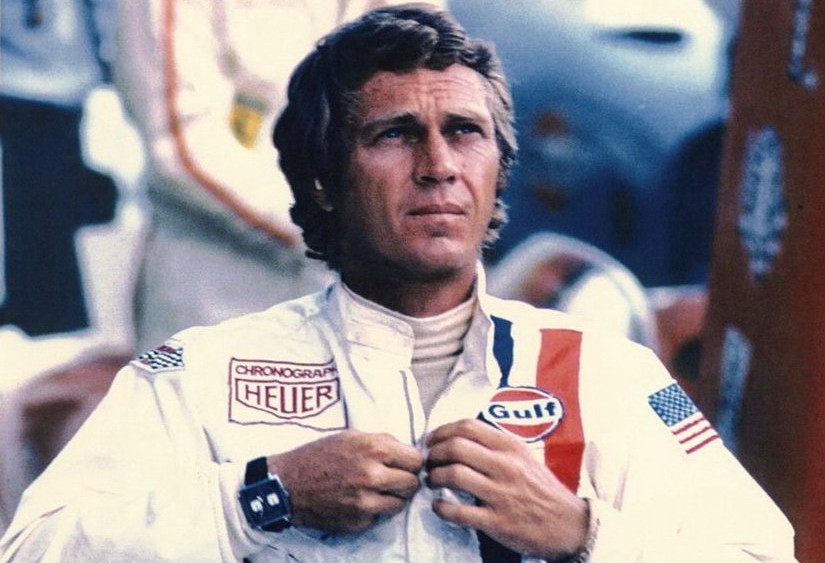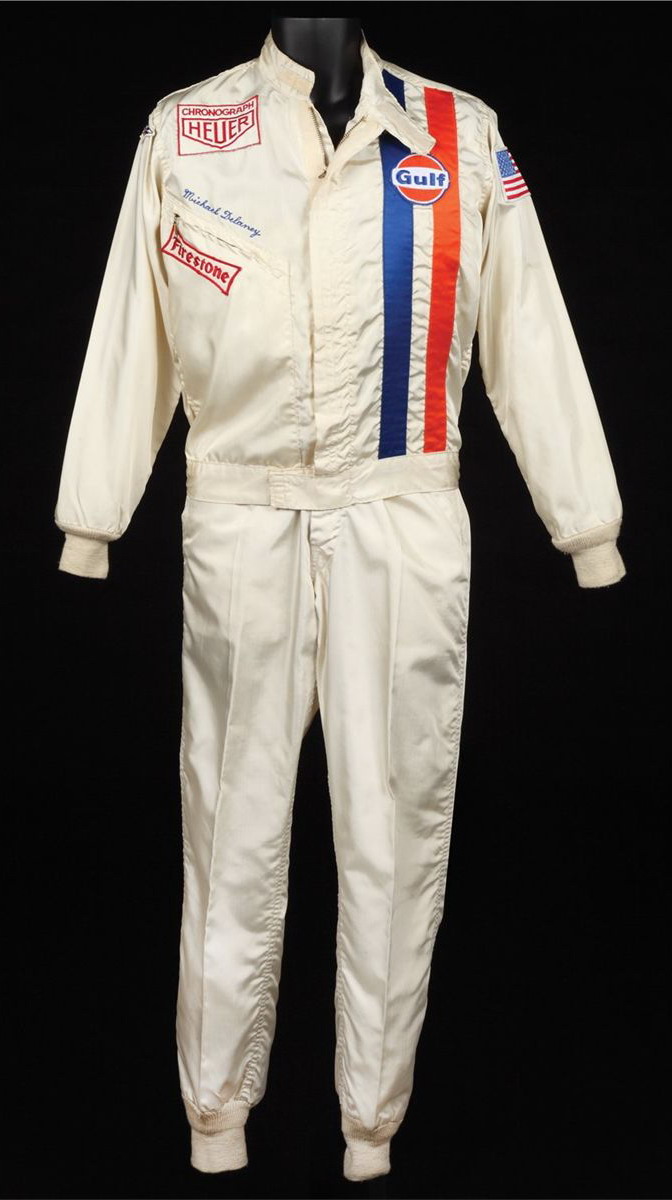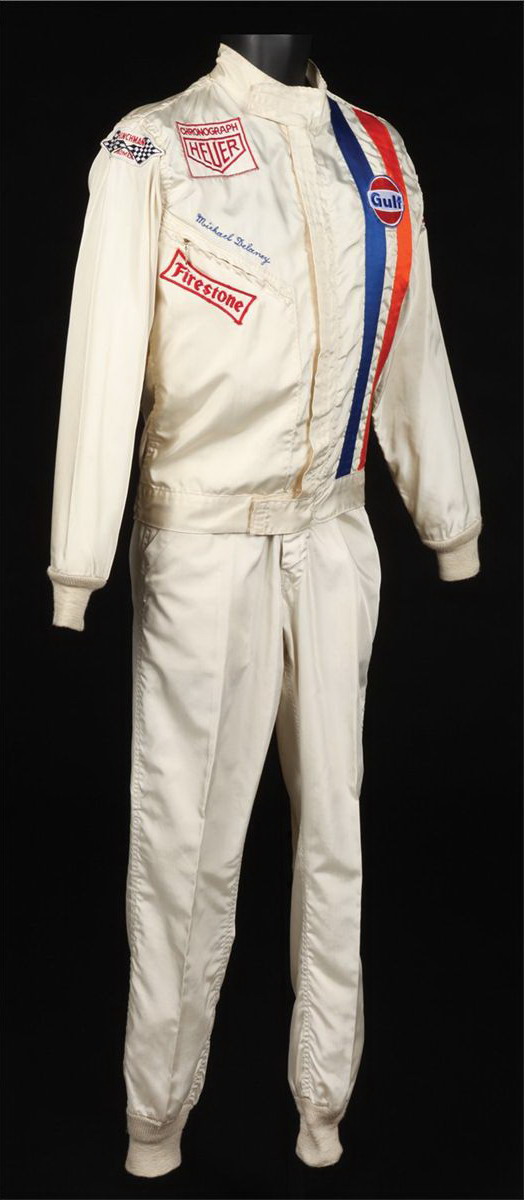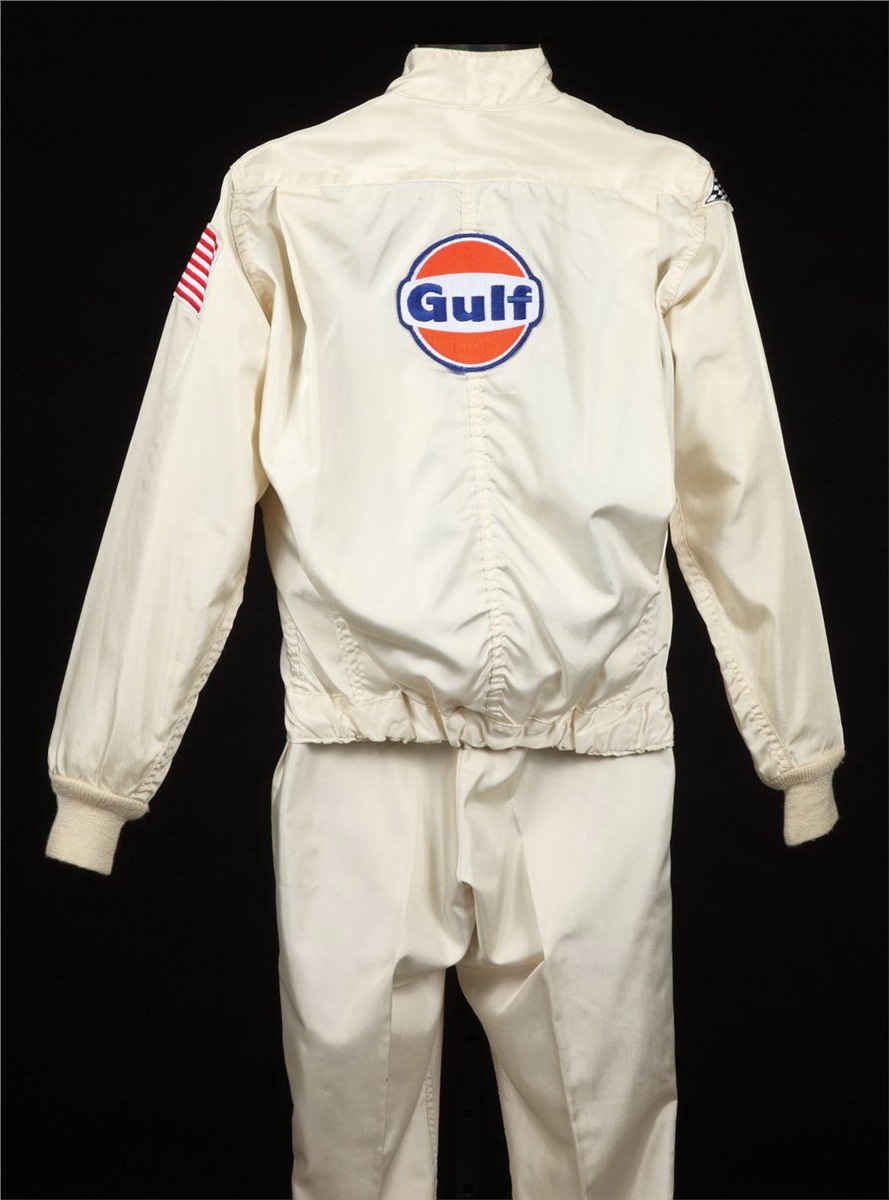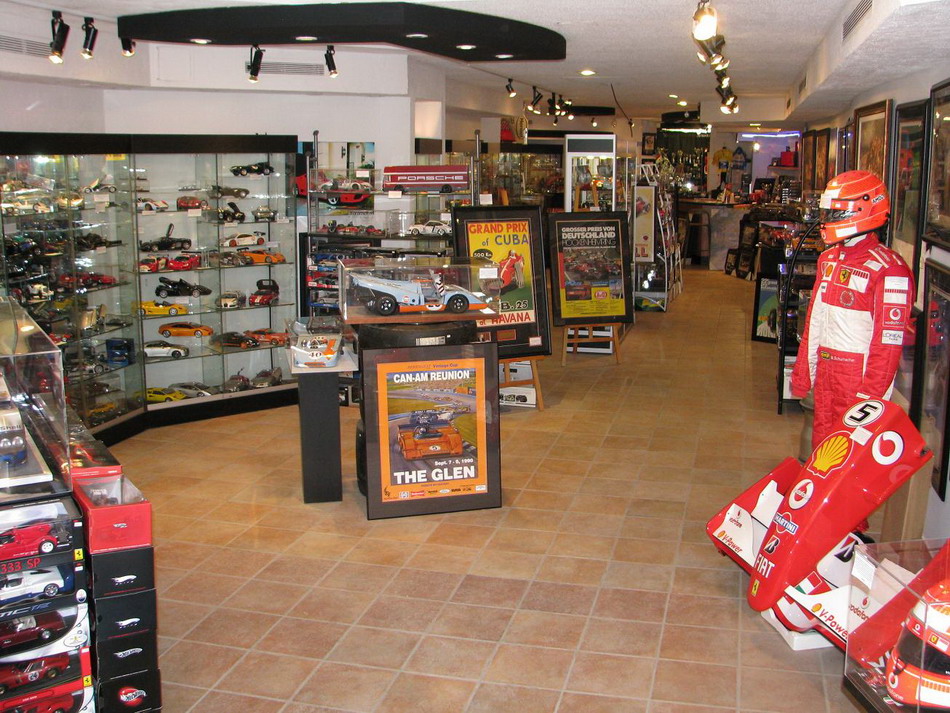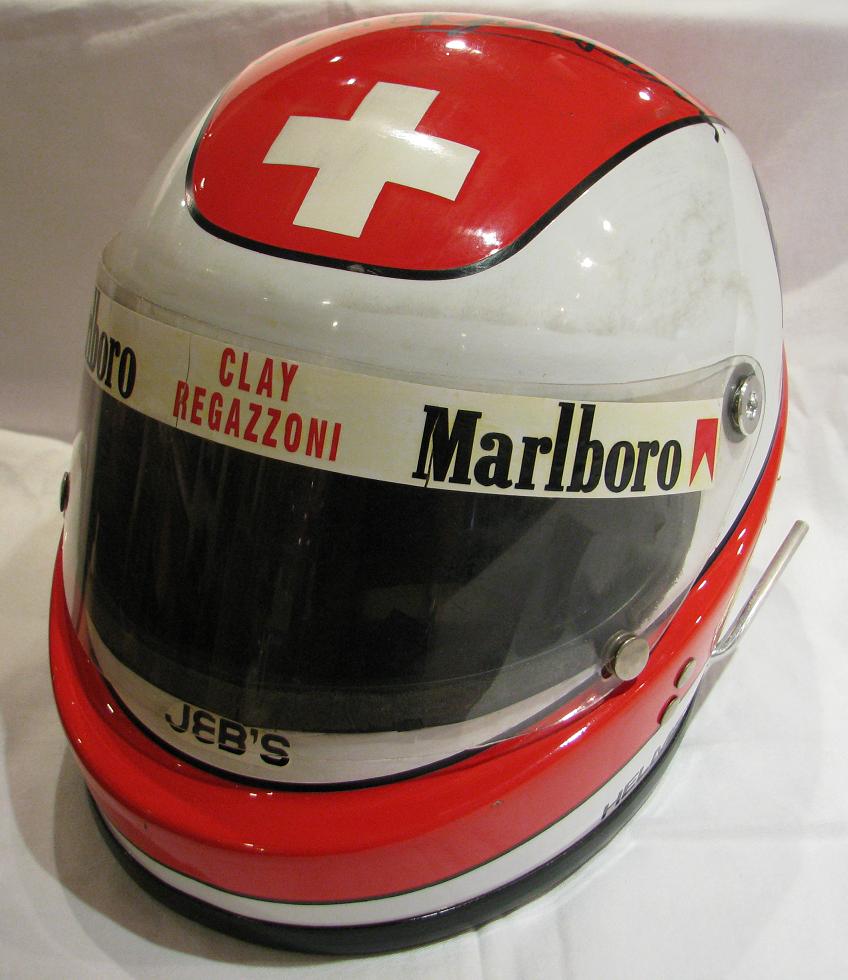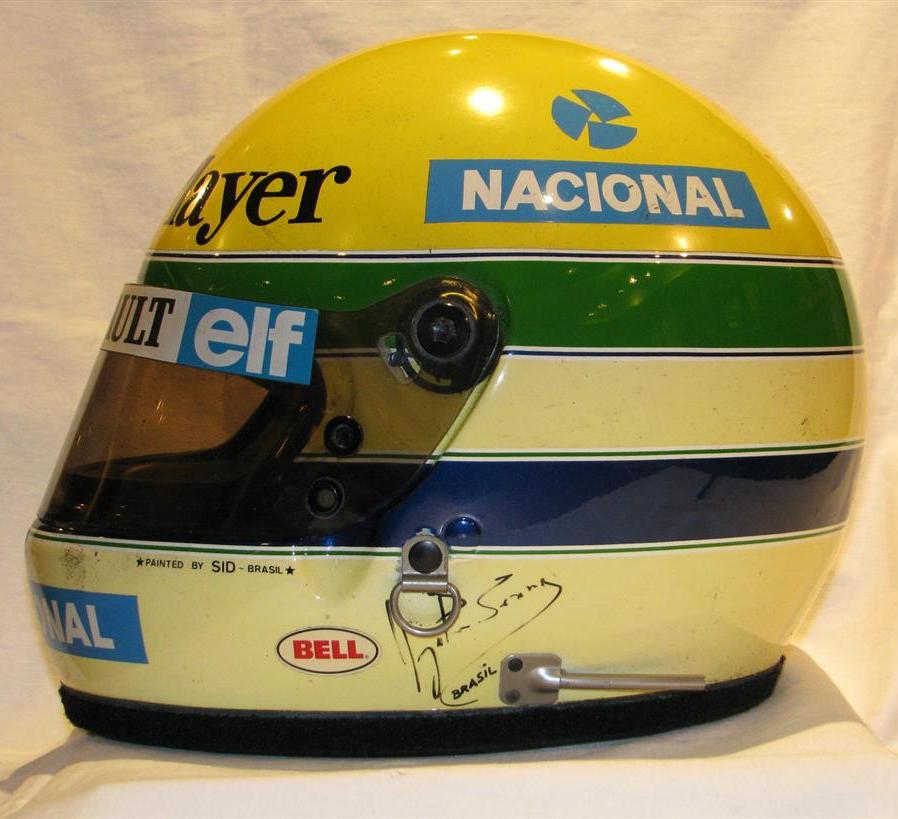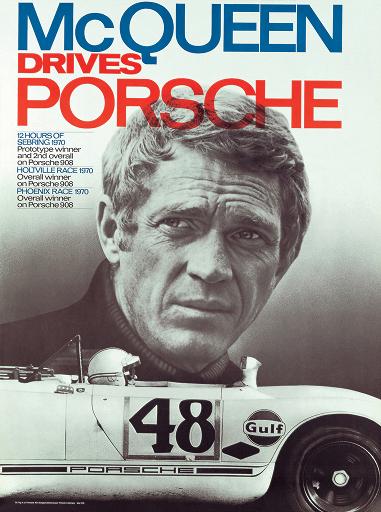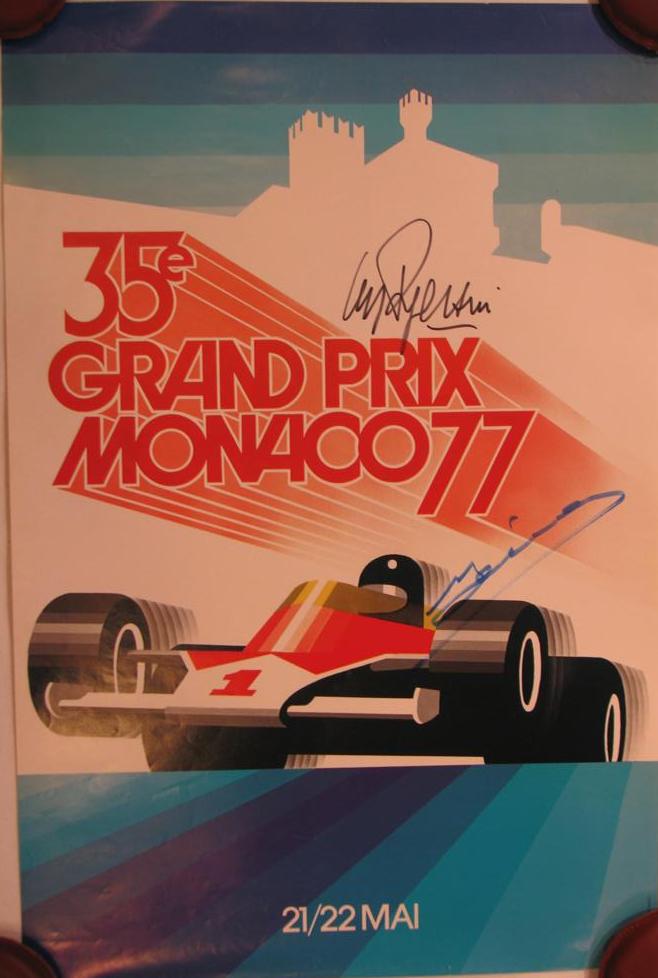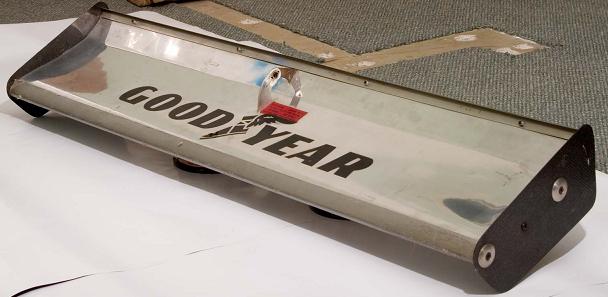If you have ever been mad at yourself for selling a watch at a price that turned out to be a shade too low, consider the case of Morry Barmak, owner of “Collector Studio”, a gallery of motorsports art and memorabilia located in Toronto, Canada. Morry recently had the good fortune of selling Steve McQueen’s Le Mans racing suit for $155,000, and then watching his buyer “flip” it for $984,000, three and one-half months later.
Sold, at $155,000. Barmak spent a good ten years of his life trying to buy the racing suit worn by Steve McQueen in the filming of the movie Le Mans, and was finally successful, bringing it to his gallery in 2010. Barmak spent the next year marketing the racing suit, in part trying to earn an honest profit on the sale of the racing suit and also to promote his gallery. Says Barmak [by e-mail], “ I spent a year using it to get my gallery publicity – magazines, blogs, word of mouth, etc. Also within that time period I offered it to every significant car collector that I know, and that pool runs deep.” In August 2011, Morry was finally successful in selling the racing suit, for $155,000 (a price which we must assume yielded some profit for his efforts).
And Sold Again, at $984,000. It must have come as a bit of a surprise to Barmak when, a few weeks later, he read a press release indicating that this very same racing would be sold as part of an “Icons of Hollywood” auction, to be held December 15, 16 and 17, 2011, by the Profiles in History auction house.
It must have been even more surprising for Barmak when, on December 16, 2011, the hammer went down on a winning bid of $800,000 (or $984,000, including the 23 percent buyer’s premium). Talk about “leaving money on the table”! How about selling the racing suit to a buyer for $155,000, and then seeing the next buyer pay $984,000 for the same item. That’s $829,000 “left on the table”.
Lessons Learned? As watch collectors, many of us must have had the experience of either selling a watch, and then seeing our buyer “flip” it for a large profit, or selling a watch, and then seeing prices for the same model increase considerably over the ensuing period. So what are the lessons, from the “flip” of the McQueen racing suit? I’m sure that every reader will have his or her own thoughts on the subject, but let me share a couple of reactions.
From Toronto to Hollywood. On an analytical level, there is clear lesson here about different “markets” or different collectors communities. You may know all the players in the motorsports memorabilia market, but then you learn — the hard way — that there is an entirely different market for movie memorabilia or even a group of collectors that focuses only on movie-worn costumes. As someone who does not follow the movie costume market, how do you compare the value for McQueen’s racing suit to a dress worn by Marilyn Monroe in The Seven Year Itch (which recently sold for over $5.6 million, with fees) or the only remaining pair of screen-used ruby slippers for The Wizard of Oz (which went unsold, against an opening bid of $2 million). These are very specialized markets and sub-markets, and it’s silly to think that any novice owning such a unique asset can estimate its value. Here, we saw Barmak’s buyer achieve some arbitrage — he bought low in the motorsports memorabilia market and sold high in the Hollywood costume collectors market.
Auctions, Egos, Alcohol and Oligarchs. There is also a lesson about one of my favorite subjects — the inherent power and unpredictability of auctions, whether live or online. The auction house, Profiles in History, had set a starting price of $200,000 for McQueen’s racing suit, with an estimate at $200,000 to $300,000. So obviously this was an auction with (at least) two bidders who wanted to take home the same prize, with money being the least of their worries. It’s likely that it was some special combination of egos, alcohol and even oligarchs that took McQueen’s racing suit to over three times the mid-point of the estimated range. There’s a lot of money in the world right now, and $984,000 may be a small price to these two collectors. [To read more about the strange things that can happen at auctions, read some of our reports on the Bonhams auction of the Haslinger collection, held in December 2010.]
If You Had All the Money You Could Have Made. Looking beyond the issues of arbitrage and auctions, to the world of collecting vintage watches, maybe the lesson from the two sales of McQueen racing suit is that we should not make ourselves crazy thinking about all the money we could have made, but didn’t. I once heard someone say that if he had all the money he didn’t make, then he wouldn’t need to make another dime (or something to that effect). This is probably true for most of us. We should approach our collecting and our investing with reasonable financial objectives, and realize that if any of us could see prices in the future, even if we could see them tomorrow, we wouldn’t be working for a living. (And if you really want to make yourself crazy, don’t focus on the Heuers that you have sold too cheap, think about all the ones that you should have bought!)
The world of vintage Heuers has seen rising prices over the last 10 years. Without a doubt, most of the vintage Heuers that have been sold – whether the common Autavias or the rarest Monacos — have been sold “too cheap”. Still, this is a high class problem. Imagine how we would feel in a declining market, if we were to hear that the $3,000 Viceroys were now selling at $800 or the “McQueen Monacos” had dropped from $12,000 to $4,000. Personally, I’m fine leaving a little money on the table, in a rising market. It’s far better than watching money disappear from our bank accounts, in a falling market.
Back at Collector Studio — Motorsport Gallery. And what about our friend Morry? He’s a super nice guy and he has been a good sport about this whole thing. Morry has a great store, with a nice selection of motorsports artwork and some fantastic racing memorabilia. You can visit his store in Toronto or look through his excellent website.
Maybe you will want to buy the autographed Clay Regazzoni’s helmet from 1976 (at CDN $15,000) or maybe a signed one from Senna (you will need to inquire for the price).
Even if you missed out on Steve McQueen’s racing suit, maybe you will still want a poster of Steve and his Porsche 908. Or maybe a Monaco poster signed by Regazzoni or Villeneuve in his Heuer-marked Ferrari?
But why stop with the Gilles Villeneuve poster? For a mere CDN $14,995, you can buy the rear wing from Villeneuve’s Ferrari (at CDN $14,995).
Yes, even with the McQueen racing suit gone to its new home, Collector Studio has some great motorsports memoribilia. And if Morry’s sale of the Steve McQueen racing suit for the small sum of $155,000, and his buyer’s subsequent “flip” of the suit for $984,000, can generate some publicity (and some sympathy), and drive some sales of Morry’s other merchandise, maybe his sale of McQueen’s racing suit will prove to be the best “investment” he ever made.
For further information, contact Collector Studio — Motorsports Gallery, as shown below.
COLLECTOR STUDIO – Motorsport Gallery
136 Yorkville Ave.
Toronto, ON, M5R 1C2, Canada
tel/fax: 416.975.5442
http://www.collectorstudio.com
